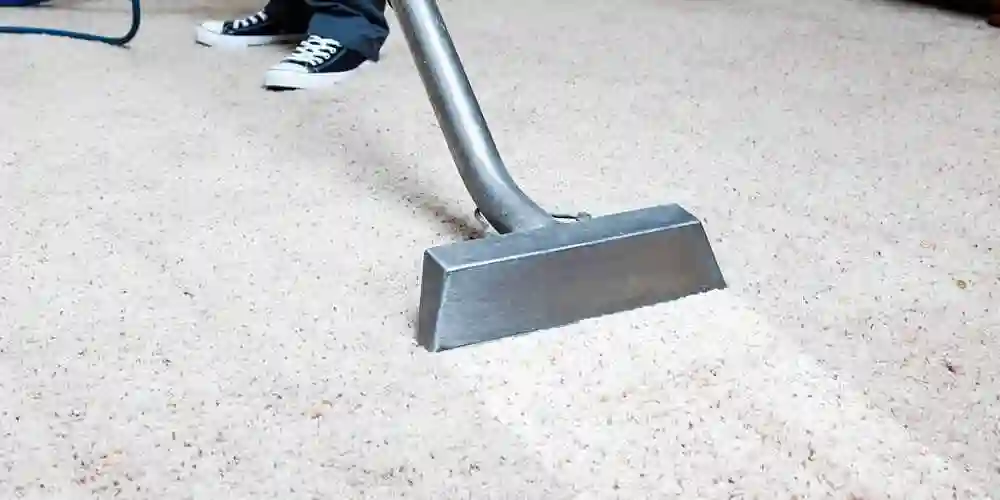When it comes to keeping your carpets clean and fresh, choosing the right carpet cleaning method is crucial. Two of the most common and effective methods used in the industry are hot water extraction and dry cleaning. In this article, we’ll dive deep into these two carpet cleaning techniques, exploring their pros, cons, and when to use each method.
Hot Water Extraction: The Deep Cleaning Powerhouse
Also known as steam cleaning, hot water extraction is a widely used method for cleaning carpets, and for good reason. It’s often recommended by carpet manufacturers and professionals because of its ability to provide a deep and thorough clean. Here’s how it works:
The Process:
- Preparation: The process begins with a thorough vacuuming to remove loose dirt and debris from the carpet’s surface.
- Pre-treatment: A cleaning solution is applied to the carpet, which helps to break down stains and dirt.
- Hot Water Injection: Hot water (not actually steam) is injected into the carpet at high pressure. This water, mixed with the cleaning solution, penetrates deep into the carpet fibers.
- Extraction: A powerful vacuum system immediately extracts the hot water, along with the dissolved dirt and cleaning solution, leaving the carpet clean and almost dry.
Pros of Hot Water Extraction:
- Deep Cleaning: Hot water extraction can reach deep into the carpet fibers, removing stubborn dirt, allergens, and bacteria effectively.
- Stain Removal: It’s highly effective in removing tough stains and odors from the carpet.
- No Residue: Since the cleaning solution is thoroughly extracted, there’s minimal residue left behind.
- Safe for Most Carpets: Hot water extraction is suitable for many types of carpets, including synthetic and natural fibers.
- Improved Indoor Air Quality: It helps improve indoor air quality by removing allergens and pollutants trapped in the carpet.
Cons of Hot Water Extraction:
- Drying Time: Carpets cleaned using hot water extraction may take longer to dry compared to dry cleaning methods. Proper ventilation is essential to speed up the drying process.
- Professional Equipment: It typically requires professional-grade equipment, so DIY enthusiasts may need to rent or hire a carpet cleaning service.
- Risk of Over-Wetting: Inexperienced users may over-wet the carpet, potentially leading to mold or mildew growth.
Dry Cleaning: Quick and Convenient
Dry cleaning, also known as low moisture or encapsulation cleaning, is a method that offers convenience and a faster drying time. It’s an excellent choice for routine maintenance and cleaning in areas with light to moderate soiling.
The Process:
- Preparation: As with hot water extraction, the process starts with vacuuming to remove surface dirt.
- Pre-treatment: A cleaning agent, often in the form of a dry powder or foam, is applied to the carpet.
- Agitation: The cleaning agent is worked into the carpet fibers using a machine with rotating brushes or pads.
- Drying and Vacuuming: The cleaning agent encapsulates the dirt, and after a short drying time, it can be vacuumed up along with the trapped dirt.
Pros of Dry Cleaning:
- Quick Drying: Carpets cleaned using this method typically dry much faster than those cleaned with hot water extraction.
- Convenience: Dry cleaning is less invasive and requires less equipment, making it a convenient choice for regular maintenance.
- No Over-Wetting: There’s little risk of over-wetting the carpet, reducing the potential for mold or mildew growth.
- Ideal for Low Soil Levels: It’s effective for lightly soiled carpets and routine cleaning.
Cons of Dry Cleaning:
- Limited Deep Cleaning: Dry cleaning may not be as effective as hot water extraction in removing deep-seated dirt and stains.
- Residue: Some dry cleaning methods may leave a residue behind on the carpet, which can attract dirt over time.
- Not Suitable for All Stains: Tough stains and heavily soiled areas may require the more thorough cleaning provided by hot water extraction.
- Not for All Carpet Types: Dry cleaning may not be suitable for certain carpet types, so it’s essential to check with the manufacturer’s recommendations.
When to Choose Hot Water Extraction vs. Dry Cleaning:
Now that we’ve explored the pros and cons of both methods, you might be wondering which one to choose for your carpet cleaning needs. Here are some guidelines:
- Hot Water Extraction: Choose this method for deep cleaning, removing tough stains, and revitalizing heavily soiled carpets. It’s ideal for periodic deep cleaning, especially in high-traffic areas or if you haven’t cleaned your carpets in a while.
- Dry Cleaning: Opt for dry cleaning when you need a quick and convenient solution for regular maintenance and light to moderate soiling. It’s also suitable for carpets in areas with limited ventilation or if you need a rapid drying time.
- Combination: In some cases, a combination of both methods may be the best approach. Start with hot water extraction for deep cleaning and stain removal, followed by routine dry cleaning to maintain freshness.
In conclusion, the choice between hot water extraction and dry cleaning depends on your specific carpet cleaning needs, the level of soiling, and the desired drying time. Both methods have their advantages and disadvantages, but when used appropriately, they can help keep your carpets clean, fresh, and looking their best. Whether you choose the deep cleaning power of hot water extraction or the convenience of dry cleaning, regular carpet maintenance is essential for a healthier and more comfortable living environment.



